Canon Lens Technology
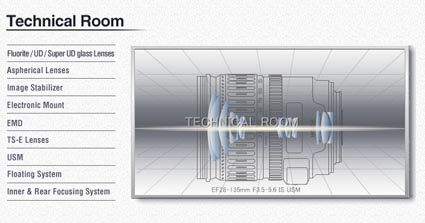
Learn about lens technology at Canon Camera Museum’s Technical Room.

Learn about lens technology at Canon Camera Museum’s Technical Room.
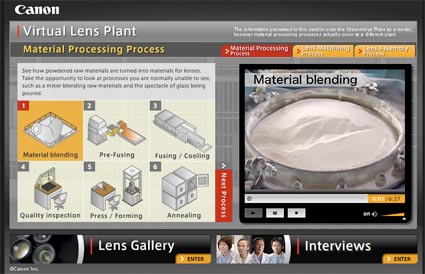
Find out how Canon lenses are made at the online Canon Camera Museum.
Prepare to be amazed! Click here.
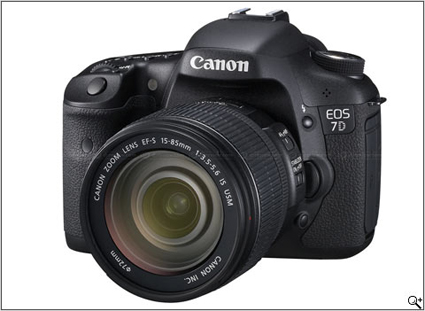
Canon introduces the EOS 7D
On September 1’st Canon unveiled their new EOS 7D digital SLR, which incorporates a new design, 18 MP APS-C CMOS Sensor (1.6x), Dual “DIGIC 4” processors, an ISO range expandable to 12,800, and continuous shooting at 8 frames per second. Oh and yea, it also shoots full HD video with options for 24 fps!
7D Features:
• 18MP APS-C CMOS sensor
• 8 frames per second continuous shooting
• 1080p HD video recording with manual controls
• 3.0 inch Clear View II LCD screen with 920,000 dots
• 19-point AF system (all cross-type)
• 1.0x magnification and 100% coverage viewfinder
• Wireless flash control
• Environmental sealing
Price:
$1,699- Body only
Is the 7D right for you?
Consider these questions:
Do I need a full frame sensor?
What kind of weather conditions so I shoot in?
Do I plan on shooting video?
How significant an upgrade is this from my current camera?
What is my budget?
Find more information about the 7D here.
Find the entire Canon line here.
Edward Burtynsky’s Manufactured Landscapes is brilliant work.

Michael Morrison is fascinated with how our world works, the nature of awareness and perception, the experience of wonder and beauty, and the central role humanity now plays in Earth’s evolution—and the future of Civilization. With a scientific background, his passion lead him to earn the first degree in Earth System Science at the University of New Hampshire and serve as the Scientific Coordinator for the Greenland Ice Sheet Project Two (GISP2), which produced a detailed, 100,000 year history of climate—a history that revolutionized our understanding of climate. His research activities have taken him to the the South Pole, the Transantarctic Mountains, Mt. Erebus, Alaska, The Himalayas, and the highest point on the Greenland Ice Sheet. He is anticipating an ice coring expedition to the Andes in 2010.
Though he loves and values scientific discovery, he finds that the beliefs at the core of our behavior are intriguing and stubborn beasts, not always responsive to simple facts. He believes creative expression is central not only to meaning and joy in life, but to the trajectory Civilization will take moving forward from here. Following belief, creativity, circumstances, and the digital revolution in imaging, Michael now offers fine-art digital imaging and printing services in Santa Fe, New Mexico and is co-authoring a book of photographs and stories from research expeditions with Dr. Paul Mayewski, a world-class climate scientist and the Chief Scientist of GISP2.
“Graphs, tables, and didactic discourse are important, but are not fully able to reach our collective conscious on the level called for by our time in history. This is the domain of creativity—playful, beautiful, surprising, and innovative—it reaches deep into our psyches, dreams, and motivations. Into our beliefs …”
Read more here about his personal experiences, what he’s learned, and his thoughts on what we can do.
Read More
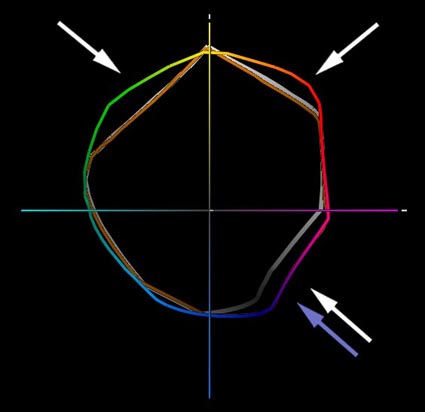
How do Epson’s three UltraChrome inksets compare?
White arrows
Areas Epson UltraChrome HDR exceeds gamut of previous inksets.
Blue arrow
Areas Epson UltraChrome K3 with Vivid Magenta exceeds Epson UltraChrome.
White
Epson UltraChrome K3 3800 on Epson Exhibition Fiber Paper
Orange
Epson UltraChrome K3 Vivid Magenta 3880 on Epson Exhibition Fiber Paper
Spectrum
Epson UltraChrome HDR 7900 on Epson Exhibition Fiber Paper
Find out more about Epson’s ProImaging printers here.
Get my free printing resources here.
Learn more in my The Fine Art Digital Print workshop series.

The numbers of Epson’s printer models mean something.
The first number (2 – 3 – 4 – 7 – 9 – 11) indicates the maximum size.
The second number (800 – 880 – 900) indicates the ink used.

Find out more about Epson’s ProImaging printers here.
Get my free printing resources here.
Learn more in my The Fine Art Digital Print workshop series.

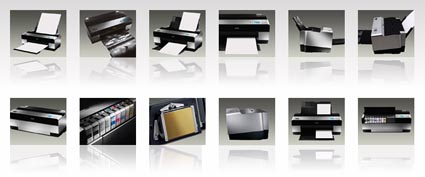
New Epson 3880!
Price
$1,295
Size
17×22″. No roll attachment.
Ink
UltraChrome K3 with Vivid Magenta (8 inks) not UltraChrome HDR (7900/9900)(10 inks)
Autoswapping Photo and Matte Black ink.
Further reduced ink waste.
Print Head
Fast.
One-inch wide, high performance print head.
Even fewer clogs.
Ink specially formulated. Nozzle specially coated. Auto nozzle check and head align.
Fine.
Maximum resolution of 2880 x 1440 with variable sized droplets as small as a 3.5 picoliters.
New MicroPiezo® AMC™ Print Head Technology (like 7900/9900).
AccuPhoto™ HD2 Screening Technology (like 7900/9900).
Among the very best printers for resolving detail and smooth gradients.
Profiles and LUTs
Epson PreciseColor™ makes unit variability is extremely low.
Epson’s ICC profiles and LUTs lead the industry.
Green
It’s built from identified plastic for easier recycling and uses smaller ink packaging.
Should you buy the Epson 3880?
Ask these questions.
What printer are you currently using?
Do you need roll fed paper?
Do you need a prints size larger than 17″?
How much physical space can you make for a printer?
Do you need the extended gamut of Epson UltraChrome HDR?
How much are you willing to spend?
Note! The optional ColorBurst® RIP Software is for PostScript and prepress proofing. Most photographers don’t need this feature.
Find out more about the Epson 3880 here.
See the entire Epson ProImaging product line here.
Get my free printing resources here.
Learn more in my The Fine Art Digital Print workshop series.

On June 5, 2009, Yann Arthus-Bertrand’s powerful new movie was released. A non-commercial venture this movie is free to everyone with an internet connection. It breaks the mold. The message is timely, succinct, and powerful.
The opening lines say it all. “Listen to me. Please. You’re like me. Homo sapiens. A wise human. Life. A miracle in the universe appeared 4 billion years ago and we humans only 200,000 years ago. Yet we have succeeded in disrupting the balance that is so essential to life. Listen carefully to this story, which is yours, and decide what you want to do with it.”
Arthus-Bertrand says, “It’s time to believe what we know.”
Belief leads to action.
What will you do?
Find lots of ideas here.
Find organizations here.
See Yann Arthus-Bertrand’s TED talk here.
Find out more about / watch HOME here.
Elizabeth Gilbert (author of Eat, Pray, Love) shares her thoughts in this wonderful talk on creative inspiration. Ole! (You’ll understand this after you watch the video.) Our attitudes about what creativity is and where inspiration comes from are key factors in how we live our creative lives. Many of our concepts are inherited. Are our legacies serving us and others well?
The ancient Greeks and Romans thought that inspiration came from a divine spirit (daemon). Genius (related to the Arabic djinn or genie) was a spirit located outside the individual. Inspire means to breathe in. During the Renaissance western culture championed the individual. Genius was a unique individual with extraordinary talents. Individuals discovered and shared their unique creations through a still mysterious but ultimately rational process. Which perspective is right?
Here’s my take on the subject. They’re both right. And there’s more.
I believe people can channel (come in contact with and give expression to) universal forces and information greater than themselves. I also believe each individual has unique resources, talents, passions, and perspectives that they can use when creating. Furthermore, I believe there are collective human resources that are created by communities (as small as two and as large as the global population) that can be activated through collaboration – either passive, remote, and asynchronous or active, direct, and synchronous. (The web and social networks are providing new means and levels of access for this type of consciousness and interaction.)
I believe these are all different types of consciousness. I believe every individual can access all of these types of consciousness. The challenge is to become more aware of them; not only subconsciously and not just intellectually but holistically; all types of intelligence apply. Any acts of creation attain an energetic presence through alignment with any of these forces. The more alignment, the more energy, the more flow, the more profound the work. Combine multiple resources together for more energy and greater perspective. Direct experience, synchronicity, and clear perspective act as intensifiers.
What do you think?
How does that affect you, your self-image, your creative life, the things you produce, and the way you share them?
Comment here!
Find more Creativity resources here.

